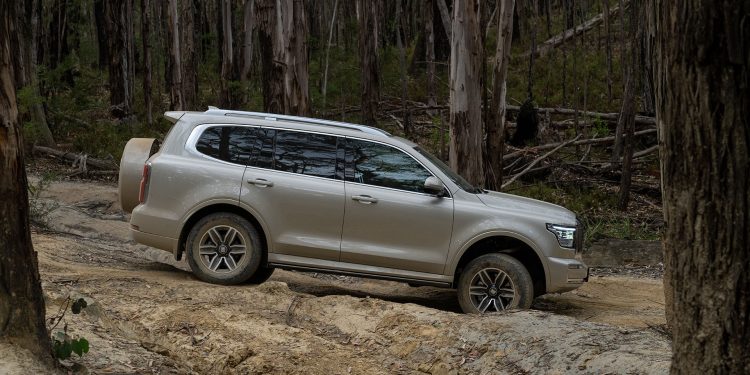GWM Tank 500 – First Drive
Words Peter Louisson | Images GWM
The second model in GWM’s Tank division is the 300’s bigger sib, the GWM Tank 500. It goes on sale here soon, and is the brand’s new range topper. The Tank 500 is more than just the seven-seat version of the 300 however, being more luxurious inside, and with added class and specification. It’s almost as off-road worthy too, as we discovered at the Antipodean launch out of Melbourne.
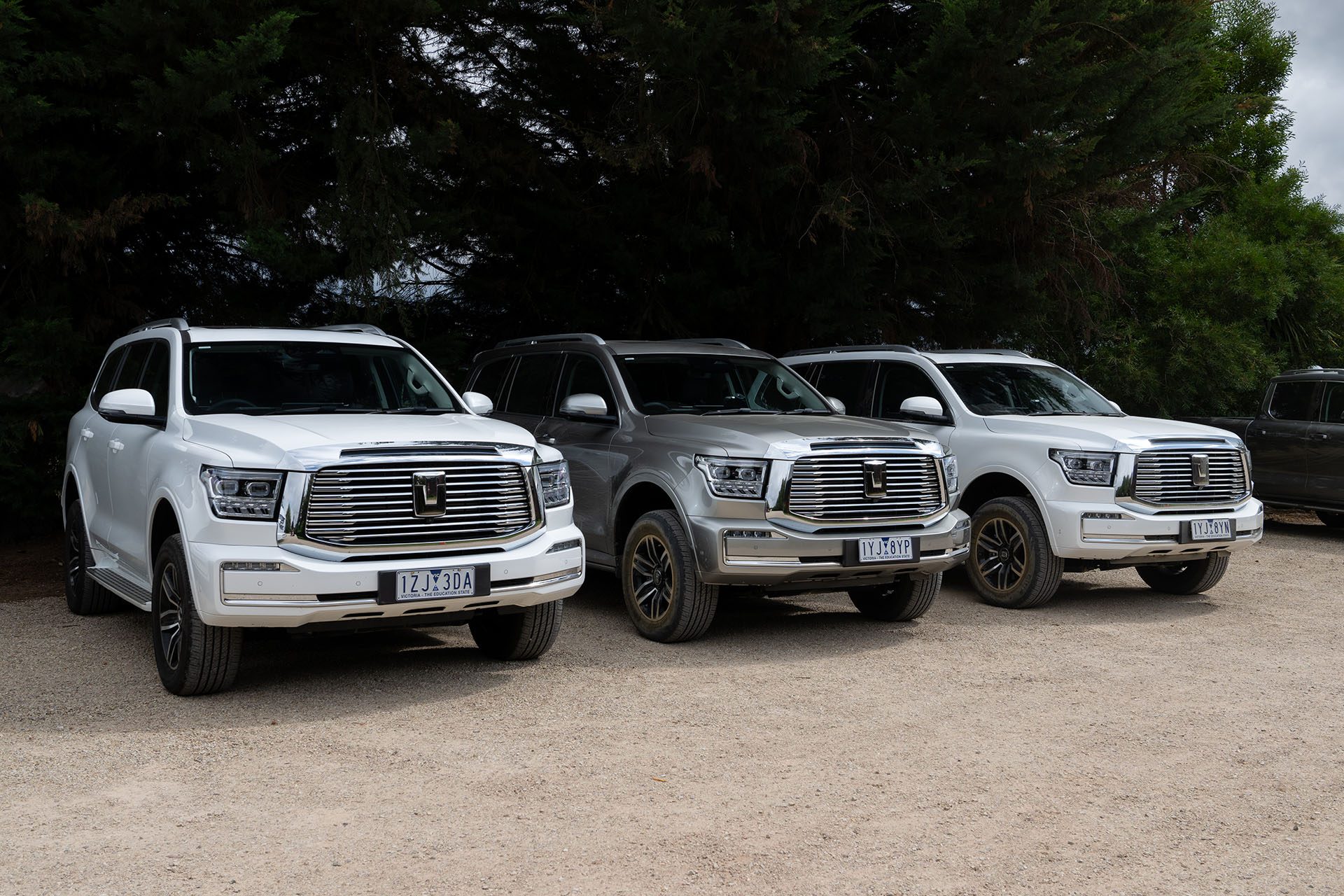
Naturally it costs extra but then you’re getting a bigger vehicle, at just over 5m in length and 1.9m in width and height, with more of everything, including interior space, seats and tow capacity, not to mention specification.
As with the Tank 300, there are two different spec levels for its bigger sib, Lux which goes on sale from $74,990 and Ultra at $82,990. Both borrow the Tank 300 hybrid powertrain, offering a solid system total of 255kW and 648Nm. The company rates fuel use at 8.5L/100km (rightcar suggests 9.5L/100km) and on the open road we saw consumption in the 11-13L/100km range, much the same as for the GWM Tank 300 then, despite the extra weight.
The Tank 500 has a slightly higher braked towing capacity than the 300, at 3000kg. As to straight line performance, there’s also said to be not much between the 300 and 500, the latter evidently just 0.3sec behind the former (8.3 vs 8.0sec).
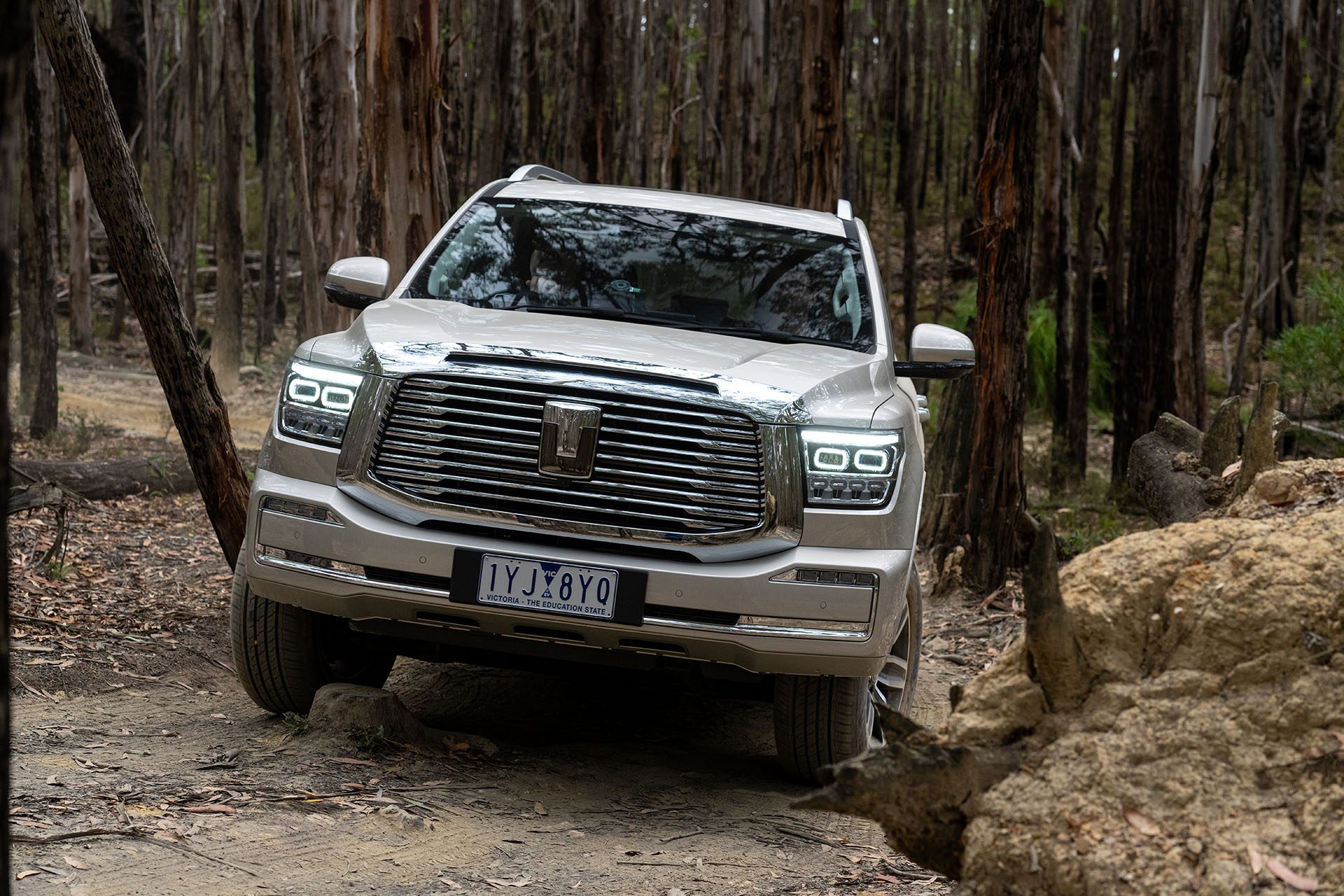
The GWM Tank 500 carries the tagline “Out There Awaits”, suggesting a go-anywhere attitude. And it sure is designed to get all the way out there with a body-on-frame construction, selectable AWD with a Borg Warner transfer case, meaning 2H, 4H and 4L, along with a locking rear diff. In the Ultra model, as with GWM Tank 300, there’s a locking front differential as well.
On the go, out of Melbourne, we quickly noticed that the lane keeping system had been fettled; it was smooth and refined compared with that in the Tank 300. There was less tugging at the wheel and we didn’t feel duty bound to turn lane keeping off.
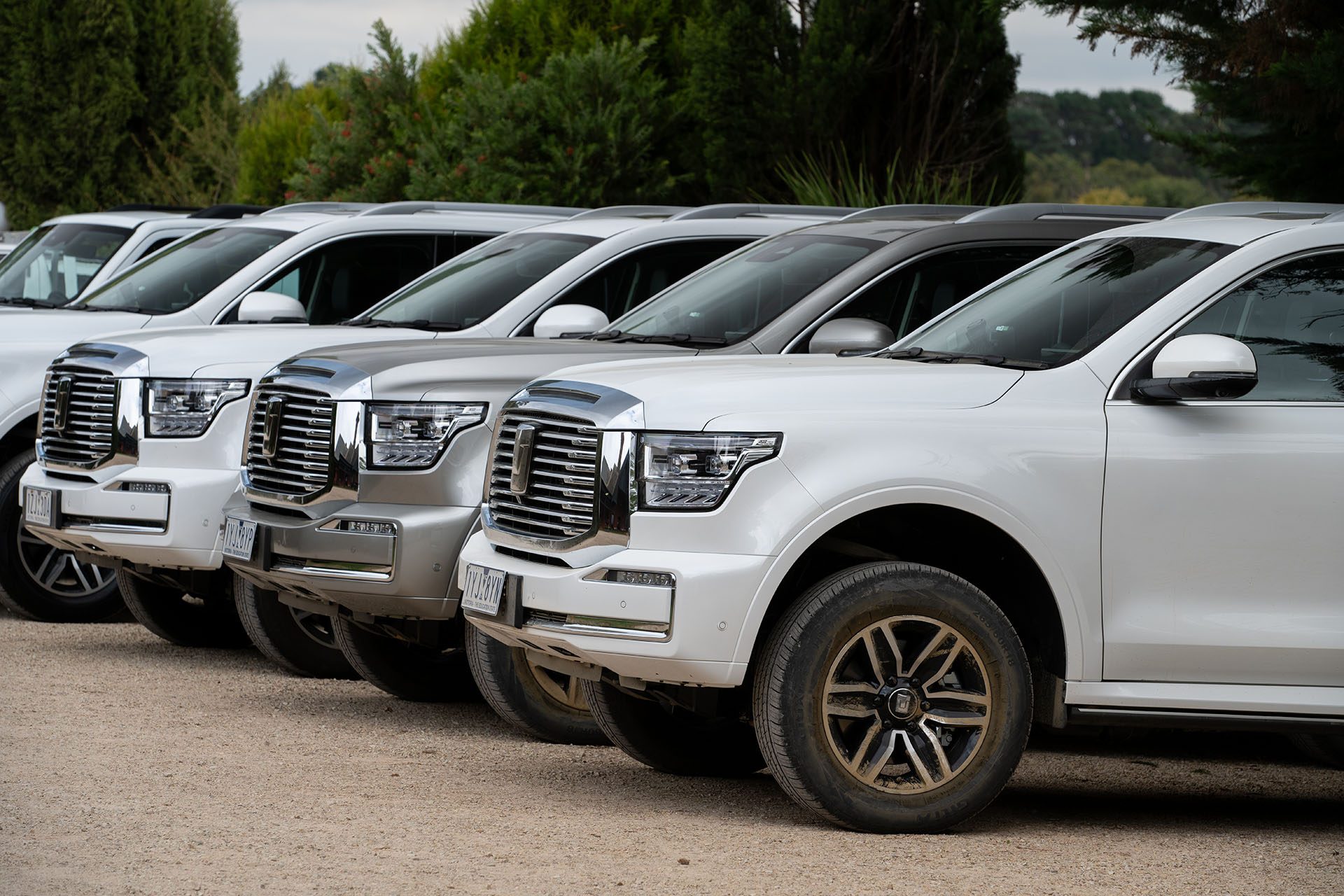
Soon enough we were onto the off-road drive programme which included a few tough uphill rock crawl sections. On one steep incline when in the 4L setting and “rock” drive mode, one of nine, the 500 just wouldn’t ascend any further, despite trying a few different lines. At this point we locked the rear diff and it was like the obstruction had been removed; it crawled over the rocky barrier with ease. At no point did we need to lock the front diff. Moreover, we came across a few sections where we had to follow deep wheel tracks and only noticed mild touchdowns on a couple of occasions. There are bash plates to protect vulnerable mechanicals.
A wading depth of 800mm is claimed but we didn’t have the opportunity to check this out. In 4L you can watch what’s happening beneath via the screen using the transparent chassis setting which makes use of the surround camera set-up. It is handy given the extremities aren’t that easy to see.
This then should get you to where “out there awaits”, providing there’s a track to follow and you’re sensible. It was not only impressive over the sections mentioned but ride quality was more than satisfactory as well, not always a given in something with a live rear axle. Coil springs help.
GWM is clearly confident of their engineering too, offering a seven-year/unlimited km warranty, along with five years of road side assistance.
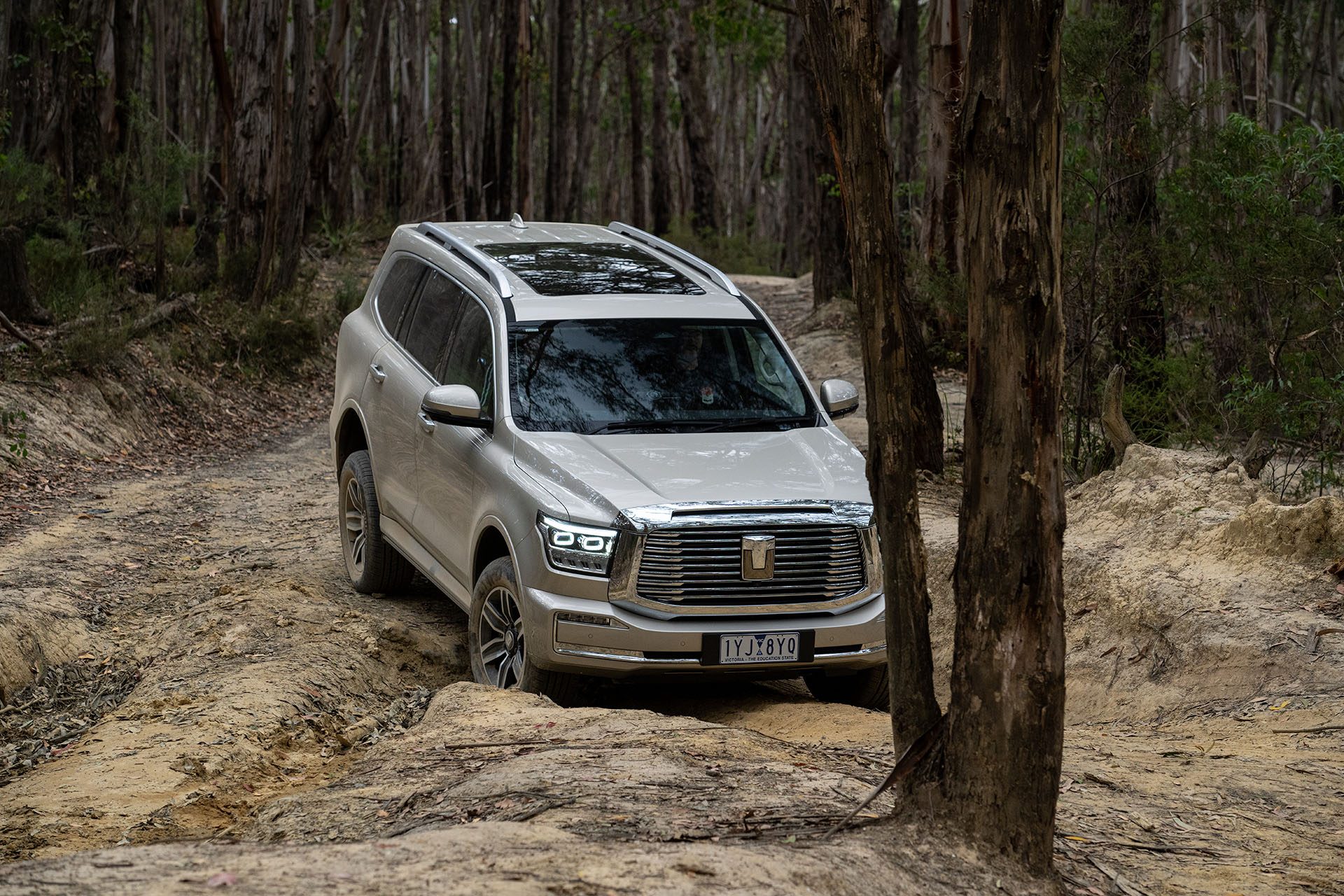
One aspect you’d not perhaps expect on a machine costing in the $75-$83k mark is retracting side boards. These are pretty handy on a vehicle with 224mm of ground clearance, extending when unlocked and the door is opened, retracting upon closing, and giving everyone a leg up into a machine that’s 1905mm tall.
This has a somewhat more imposing look than the Tank 300, which is appropriate, and it’s also more impressive inside thanks to the use of higher quality components. It takes a bit to orient yourself with functionality, and the rebukes for any instances of overspeed driving are loud and incessant.
Back on tarmac and what’s also readily apparent compared with the GWM Tank 300 we drove quite recently are improved body control and ride refinement. There’s less roll in corners and the ride feels smoother, perhaps in part the result of a 100mm longer wheelbase. Another clear improvement is system performance in the Normal drive mode. It seemed somewhat reticent in the Tank 300 but feels more natural in the Tank 500’s Normal mode. That is, there’s decent response to a modest increase in gas pedal pressure so you’re not always tempted to switch to Sport mode. That should also impact on fuel economy positively, though there’s still 2.6 tonnes of kerb weight to motivate.
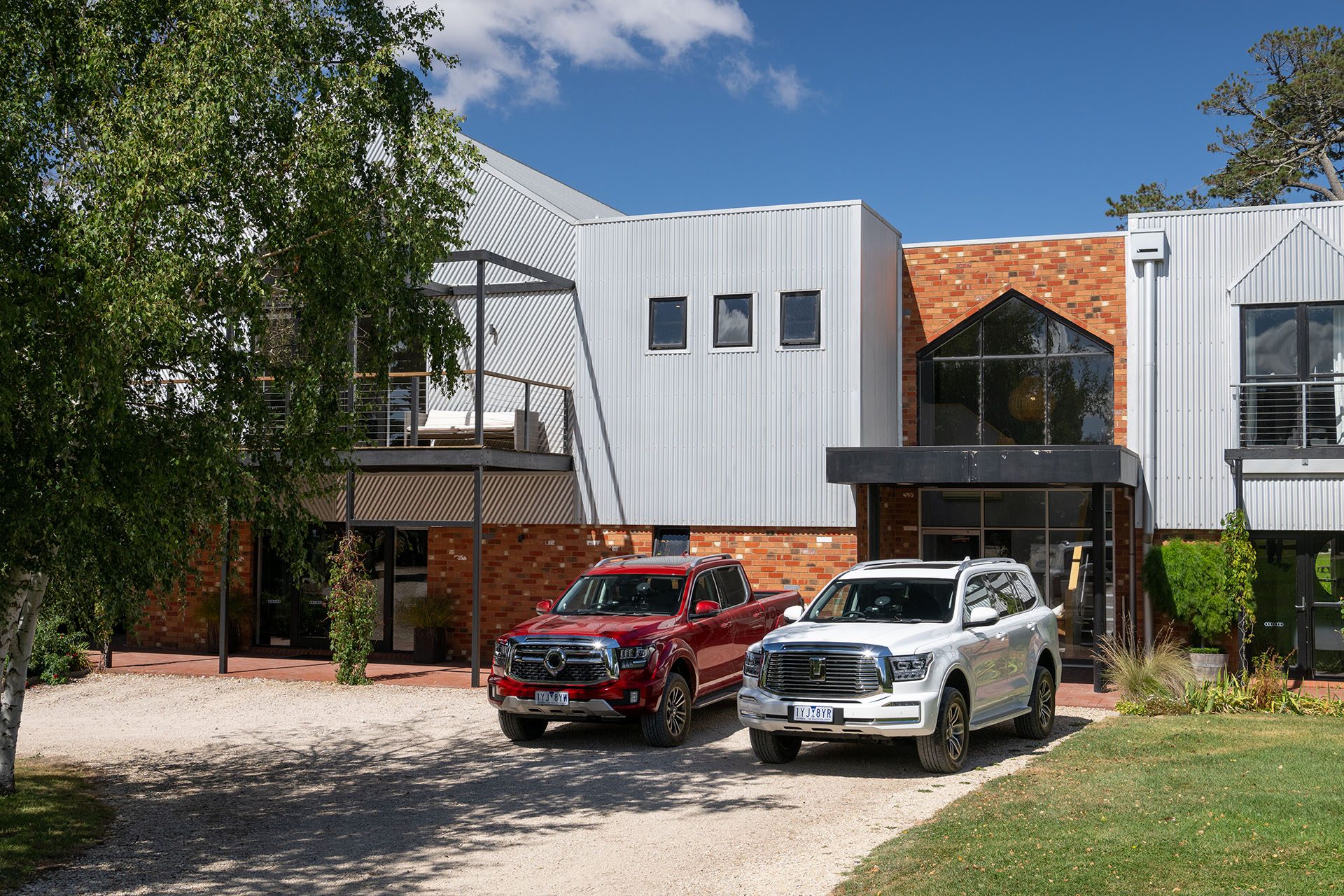
This is a seven seater, as mentioned and while the room in the luggage compartment with all seats in use isn’t flash at 98L it is much better with the third row retracted (795L) and is substantial with the second row also gone (1459L). Third-row seats are electrically operated.
We liked the fact that leg room in the rear is also variable and that the floor is almost flat. You can bet rear seat occupants will be happy about those aspects. The squabs are plush too.
And one final improvement over the Tank 300 is spare wheel placement. Perhaps it is in part because of a bigger rear screen but the spare wheel doesn’t seem to impinge so much on rearward visibility.
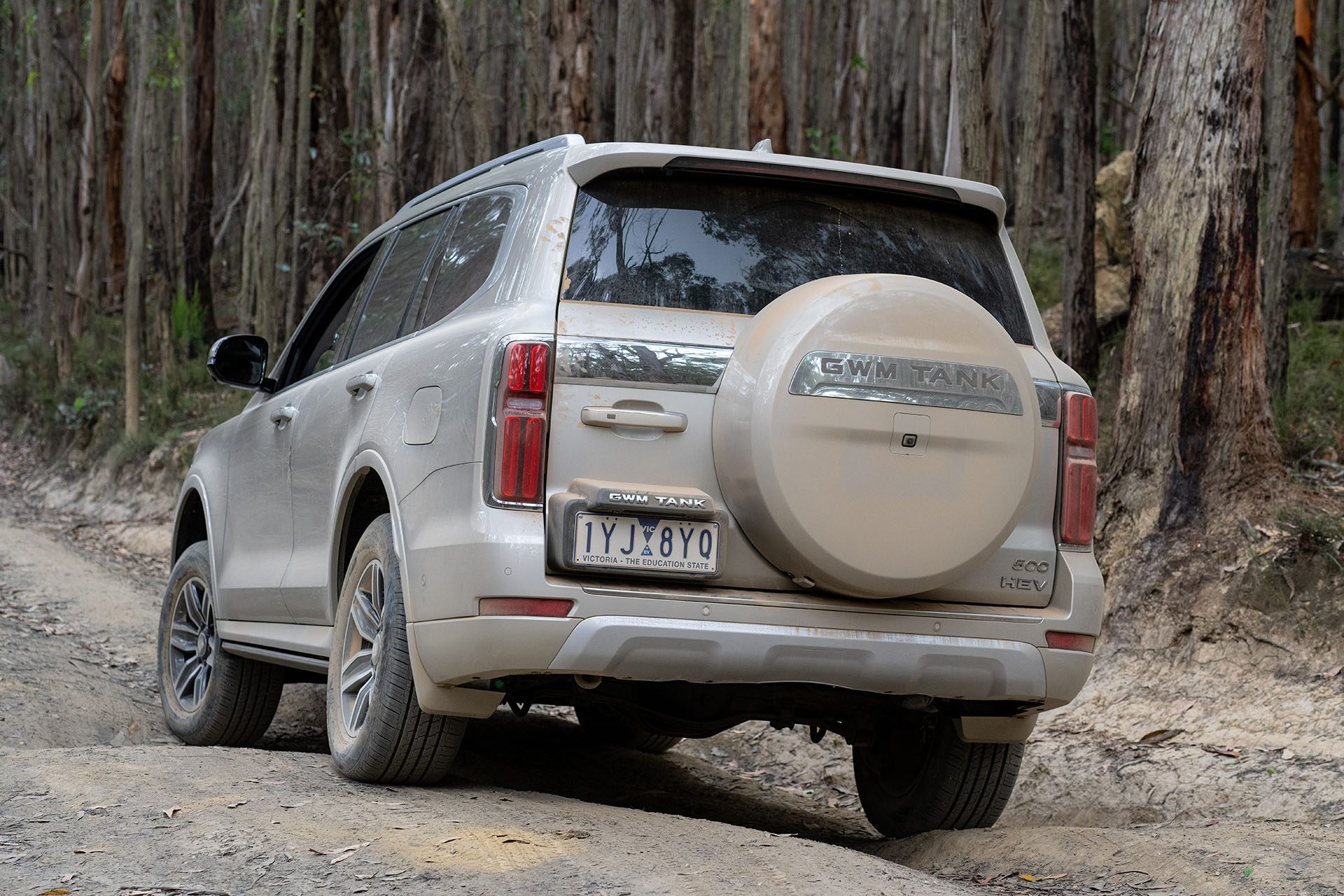
As to safety, both variants get a 360-degree surround camera, seven airbags, front and rear cross-traffic alert, lane keeping and centring, AEB, traffic sign recognition, BSM and adaptive cruise control. The Tank 500 is yet to be tested by ANCAP but the Tank 300 has a five-star rating and GWM expects its bigger sib is capable of achieving that too. Ultra carries extra specification over the well featured Lux model, including ambient lighting, panoramic sunroof, Nappa leather finish and heated, vented and massaging seats, amongst other features.
As to the future, there is a PHEV available in China which might well find a place in the Australasian market some time down the line.
Keep a lookout for a more extensive report of the GWM Tank 500 in the May issue of NZ Autocar.


